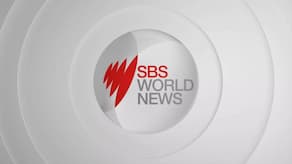An image of a damaged human heart covered in yellowish fat from too much junk food would turn people off eating unhealthy fried chips and burgers, a study has found.
Health experts say it's time for junk foods to carry graphic warnings like cigarette packets do, to combat the obesity epidemic.
A University of Melbourne and Cancer Council Victoria study, published on Thursday, found the use of graphic warnings - like a decayed tooth or fatty heart - on unhealthy food was an effective tool in improving a person's diet.
For the study, 95 hungry participants were shown colour pictures of 50 different snack foods ranging from chips, chocolate bars and biscuits to nuts, fruits and vegetables.
They were asked to rate on a scale how much they would like to eat each food at the end of the experiment.
Participants were then shown a number of different health warnings and asked to rate a similar set of 50 snack foods.
The research, published in the journal NeuroImage: Clinical and Appetite, found negative text combined with images was twice as effective at changing people's choices than messages that had negative text-only content or those with images combined with positive text.
In addition, participants' brain activity was monitored with electrodes attached to their heads.
This showed the warning labels prompted participants to exercise more self-control rather than act on impulse.
"The study shows that if you want to stop people choosing fatty and sugary packaged foods, health warnings actually work," said study co-author, Dr Stefan Bode.
"It sheds light on the mechanisms in the brain that underlie the effects of health warning messages on food processing," Dr Bode said.
Cancer Council Victoria behavioural researcher Dr Helen Dixon says the graphic images work because they "disrupt" the strong cues - like taste - that images of junk foods elicit.
This then allows a person to consciously consider the health implications of their food choices, she explained.
Obesity Policy Coalition executive director Jane Martin says the use of packaging should be used for good, not for bad.
"This research demonstrates that powerful, relevant information on food packaging can influence people and push them away from junk food," said Ms Martin.
"Poor diets and being above a healthy weight are risk factors for heart disease, type 2 diabetes, and cancer. To address this Australia needs a comprehensive strategy, which should consider improved labelling," she said.
The public health advocates have called on the government to make the graphic labelling mandatory, as part of the revised Health Star Rating System.
